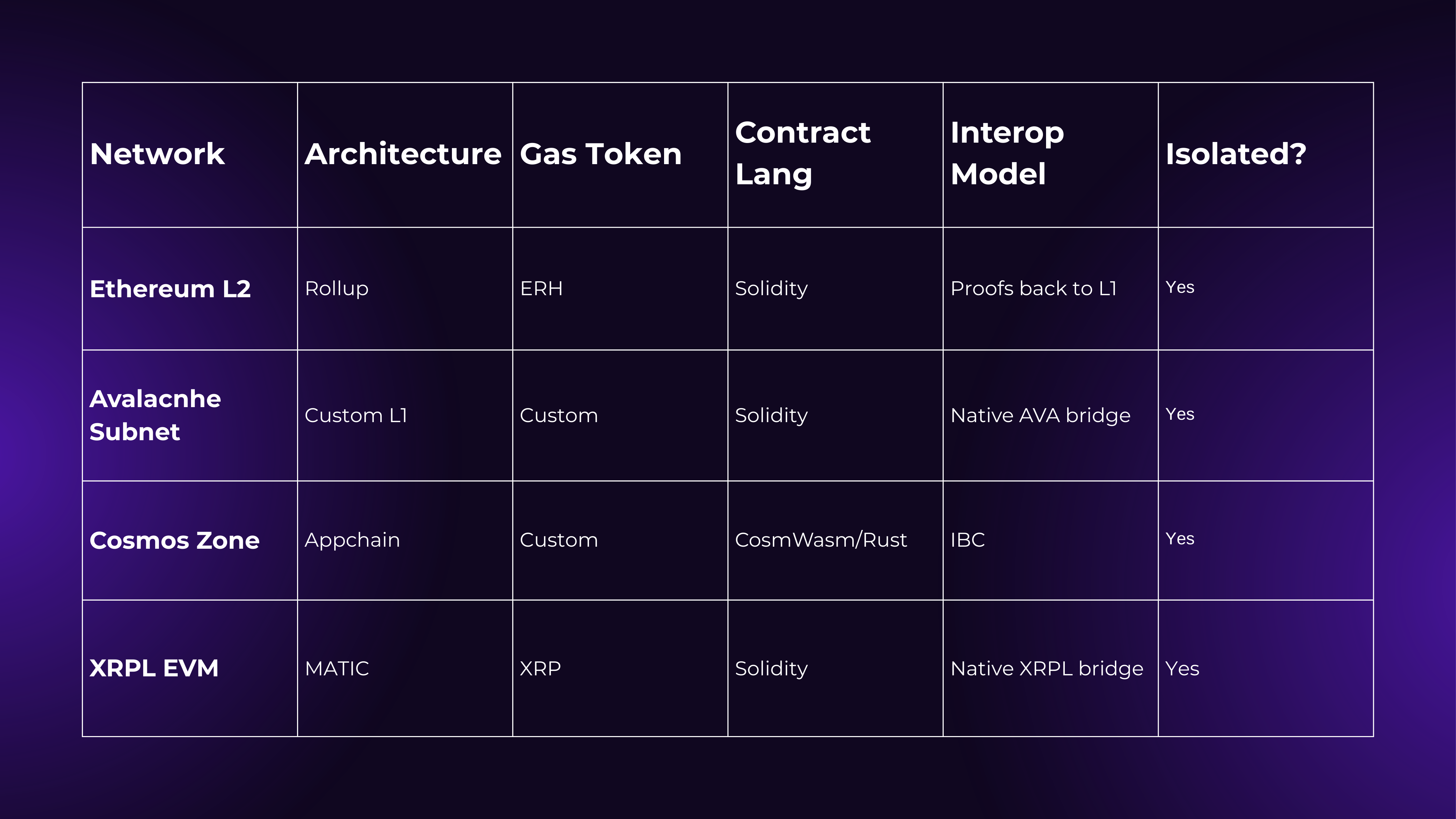How XRPL EVM Actually Works — and Why the Sidechain Model Matters
How XRPL EVM Actually Works - and Why the Sidechain Model Matters
XRPL EVM brings smart contracts to the XRP ecosystem. That part you’ve probably heard.
But how exactly does it work? What’s going on under the hood? And why did they choose a sidechain model - instead of something like a Layer 2 or a typical EVM chain?
This article breaks it all down. Simply. Clearly. With examples.
What is XRPL EVM?
At a high level, XRPL EVM is an Ethereum-compatible blockchain that runs next to the XRP Ledger.
It lets developers build dApps with Solidity, use Ethereum tools like Metamask and Hardhat, and interact with familiar smart contract logic - all while using XRP as the gas token.
It’s not a fork.
It’s not a Layer 2.
And it’s definitely not just a wrapper.
XRPL EVM is a sidechain - an entirely separate network connected to the XRP Ledger via a native bridge.
Let’s unpack why that matters.
Why not Layer 2?
You might be wondering: why not just build a Layer 2 like Arbitrum or Optimism?
Here’s the issue: Layer 2s inherit security from a Layer 1. They submit proofs back to Ethereum. That’s great for Ethereum, but XRP Ledger was never designed for this model. It doesn’t use the same data structure. It doesn’t rely on the EVM. And it doesn’t process transactions the same way.
So the team behind XRPL EVM made a different choice:
Build an independent EVM chain, and connect it to XRPL through a secure, two-way bridge.
This way, the EVM chain can scale independently - and XRPL remains untouched.
What does “sidechain” actually mean?
In the XRPL EVM architecture, a sidechain is a separate blockchain that:
runs its own consensus, validator set, and blocks
supports smart contracts, just like Ethereum
connects to XRP Ledger through native bridges
uses XRP as the gas token (not a wrapped ERC-20)
The sidechain does not rely on XRPL for security or execution. But it does rely on XRP Ledger for:
account management
base-level asset tracking
entry and exit of funds (bridging XRP in and out)
How the bridge works (in plain English)
Bridges are often misunderstood. Here’s how XRPL EVM's bridge functions - simplified:
A user locks XRP on the XRP Ledger (mainnet)
The bridge notices and mints a wrapped XRP token on XRPL EVM
That token is used in dApps, swaps, contracts, or NFT minting
When the user wants to exit, they burn the wrapped token on XRPL EVM
The bridge unlocks the real XRP back on the XRP Ledger
This isn’t a centralized solution.
It’s fully automated and cryptographically verified.
And it’s two-way - you can go back and forth.
Why this design makes sense
Let’s look at the key benefits of using a sidechain approach.
1. Isolation = resilience
If XRPL EVM gets congested, attacked, or bugs out - it won’t affect XRP Ledger.
That’s critical. The mainnet stays clean, stable, and fast. Builders can experiment on the EVM sidechain without fear of breaking the core network.
2. Predictable, low fees
Since XRPL EVM runs its own rules, it doesn’t suffer from Ethereum gas wars.
All fees are paid in XRP, and they’re cheap and stable - ideal for micro-transactions, NFT minting, or interactive games.
3. Ethereum dev experience
You don’t need to learn a new language like Move or Rust.
You can use:
Solidity
Remix IDE
Hardhat or Foundry
Metamask
This reduces the learning curve and makes migration easy. Got a dApp on Polygon? You can port it to XRPL EVM with minor tweaks.
4. Faster development
Since the network is new and not overloaded, deployment is fast.
Your transactions won’t sit in mempool queues for minutes.
Your contracts will execute quickly.
That’s a huge advantage when you’re testing, demoing, or building in public.
Real-world example: Launching an NFT project
Imagine you’re launching a 10,000-piece NFT collection.
On Ethereum, you’d worry about:
minting fees going from $5 to $40
your users needing ETH
long confirmation times
bots sniping transactions
On XRPL EVM, you can:
let users mint using XRP
confirm in under 5 seconds
avoid gas spikes
keep fees under control (even with heavy traffic)
And when you’re done - profits can be bridged back into XRP on the mainnet.
Simple. Efficient. Web3-ready.
How it compares (technically speaking)

What’s next?
The current XRPL EVM testnet already supports:
wrapped XRP
smart contracts in Solidity
NFT minting
basic DeFi primitives
wallets like Crossmark and Metamask
The bridge is live. The developer docs are public. And the mainnet is on the horizon.
XRPL EVM is not just a technical experiment - it’s a production-ready foundation for real Web3 apps.
Final thoughts
There are many ways to scale Web3.
Some chains try to squeeze everything into one L1.
Others use rollups, custom stacks, or zkVMs.
XRPL EVM picks a clean, pragmatic path:
Build a fast, cheap, Ethereum-compatible chain - and connect it to XRP.
Not overengineered. Not overhyped.
Just solid, modular infrastructure that works.
And if you’re a developer or founder who wants flexibility without gas pain,
XRPL EVM might be the most practical place to build in 2025.